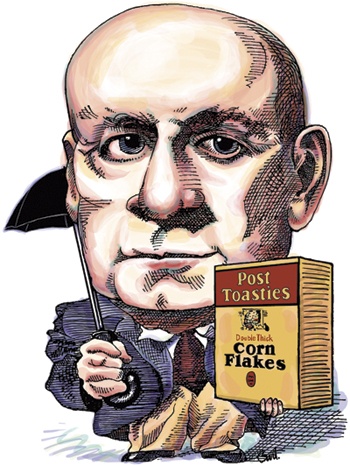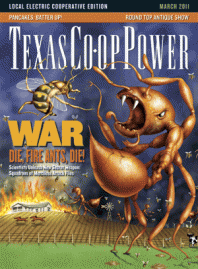In the early 1900s, a tiny town launched by cereal magnate C.W. Post sprouted beneath the majestic Caprock in West Texas. On the advice of his doctor, Post had moved his family from the Midwest to southeast of Lubbock, where he hoped the dry climate might improve his poor health. Inspired by the sweeping vistas, he set out to create a perfect town, a utopian village in what would become Garza County. With little fanfare and a great deal of cereal money, he began to develop Post City, which he envisioned as a place where hard-working families could buy a home for a reasonable price and live in a self-sustaining society.
But Post’s genius was clouded by mental problems. Before the psychological terms manic-depressive and bipolar disorder were tossed about in everyday conversation, Post was merely considered peculiar, a gentleman with mood swings that rivaled the peaks and valleys of the Rockies. From the crests of his psychological highs, Post’s inventive mind conjured up new products that made him a household name and launched wildly ambitious projects that might normally be considered the province of Mother Nature. His low points often terminated in a visit to a sanitarium, from which he would emerge many months later rejuvenated and begin anew.
Born in Springfield, Illinois, in 1854, Charles William Post climbed to his first pinnacle of success by inventing and patenting his own models of agricultural equipment. At a sanitarium in Battle Creek, Michigan, where he went for a “rest,” Post met John Harvey Kellogg, a doctor who was destined to become a competitor in the cereal aisle at the grocery store. Fed a grain-rich vegetarian diet at the sanitarium, Post became convinced that coffee was killing him. He invented Postum, a grain-based coffee substitute, followed quickly by Grape-Nuts and cornflakes. At first, Post called his cornflakes “Elijah’s Manna,” but, scolded by the devout, he changed the name to Post Toasties and built a breakfast food empire.
Post soon discovered that his West Texas utopia had two major problems: weather and water. Weather was often uncooperative, and water for the green gardens and orchards he had envisioned was going to be hard to come by. He remembered reading tales of the deluges that occurred just after major battles in the Napoleonic Wars, and old soldiers who had fought in the American Civil War recounted rumors that heavy cannon fire seemed to bring rainfall. After considerable research, the cereal king decided to make his own rain.
In Post’s first rain experiment in 1910, he attached two pounds of dynamite to a kite, flew it into the clouds and ignited it. Too dangerous, he concluded. On the high elevations of the Caprock, he tried igniting 14-pound bundles of dynamite spaced 50 feet apart on the ground and set off at 10-minute intervals. Post’s most successful “rain battle” blasted 24,000 pounds of explosives. By some accounts, a refreshing rain fell.
Post’s attempts to tweak the weather in his favor continued through 1913. Reportedly, he spent more than $50,000 on rain battles and claimed he enticed seven showers from the sky in 13 attempts. His detractors insisted that the rain battles occurred during the time of year when natural storms were most likely to happen anyway.
In between attempts to blast water from the sky, Post threw himself into the development of his utopian town. Bungalows sprouted amid mesquite trees. Parks cropped up in the middle of town. Orchards produced fruit, and Bermuda grass, seeded around the model houses, spread into lush lawns. A modest home outfitted with leather wallpaper was built for Post and his family, although he lived there only intermittently.
The huge amount of energy required by all these projects took a toll on Post. In 1914, a Chicago newspaper reported: “C.W. Post has broken down from overwork and mental strain.” He was rushed in a private train to the Mayo Clinic in Rochester, Minnesota, where he underwent surgery for appendicitis. Post’s daughter, Marjorie, and his parents were by his side. After the surgery, he seemed to be recovering and traveled back to where he was living in California. But melancholy took possession of his spirit once again. Post’s death by suicide followed two months later.
Today, Post, the seat of Garza County, is an ordinary little town of about 4,000 people. About 35 historical markers around the county point out landmarks to visitors, and the Garza County Historical Museum in town offers glimpses of life from the mid-1800s through present-day. The buildings in Post have an eerie similarity, a reminder that the design of the town grew from the creative mind of a genius with a vision for the future.
——————–
Martha Deeringer is a frequent contributor to Footnotes in Texas History.


